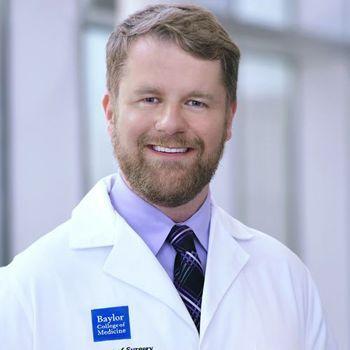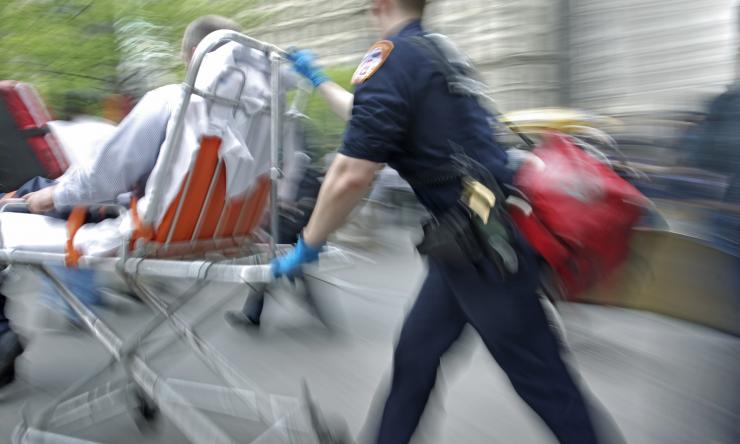How bystanders can help trauma victims
May is Trauma Awareness Month, and while many of us associate trauma with scenes from popular television dramas or movies, we generally don’t know what goes into assessing and treating traumatic injuries. A trauma surgeon with Baylor College of Medicine and Ben Taub Hospital explains the different types of traumas and what a bystander can do to help.
There are two main categories of trauma that people sustain. Penetrating traumas occur when an object pierces the skin and creates an open wound, such as a gunshot or stab wound. Blunt traumas occur when there is impact with the body, but the skin is not penetrated, such as injury in a car accident or fall.
The role of EMS and hospital staff

When EMS arrives to the scene of a trauma, they assess the patient based on various criteria, such as blood pressure and mental status, and send the information to the hospital while they are in route. This way, when they arrive at the hospital, the trauma team is ready to hit the ground running with whatever treatment the patient needs.
There are five different levels by which trauma centers are designated, and they refer to the resources the trauma center has available to treat patients. Level I is the highest and means that the trauma center can provide the highest level of surgical care to trauma patients. Harris Health System’s Ben Taub Hospital is one of only two Level I adult trauma centers in the city of Houston.
It can be difficult to distinguish the severity of a person’s injuries, which is why EMS, the emergency department of the hospital and trauma surgeons work closely together to make these determinations and provide the appropriate care quickly.
“If you are the patient, you have the right to think that what is happening to you is an emergency, so as part of patient respect and autonomy, we treat it as an emergency,” said Dr. Millard Andrew Davis, assistant professor of surgery in the Michael E. DeBakey Department of Surgery at Baylor and trauma surgeon at Ben Taub. “Then, when we do our workup, we can determine if any injury you have is life-threatening, requiring further emergent surgery care.”
How bystanders can help
While it is common for bystanders to be fearful to help someone who is experiencing a traumatic injury, there are a few things they can do to help after calling 911.
“If you are able to help in a safe and effective manner as a bystander, even if it’s just providing EMS with information about what you saw or what happened, that is incredibly valuable,” Davis said.
When providing assistance, protect yourself first and be sure that you are not in harm’s way. If the patient is awake, make sure that they are trying to stay calm and thoughtful.
An important way to help is if someone is actively hemorrhaging from an obvious wound, such as from their arm or leg or scalp, apply direct pressure to the wound with gauze or a cloth to stop the bleeding. Another option is to apply a combat tourniquet, if available, above the injury to prevent further injury and bleeding, and, thus, prevent blood loss and potentially death.
“Those are simple things that people can do to really change the outcome of somebody’s life,” Davis said. “Compressing at the site or just above to stop blood loss makes a huge difference to the patient and to us when they arrive.”
Bystanders should not move the patient except to get a better angle to stop the bleeding or to get them out of harm’s way.
In basic life support cases, try to maintain spine immobility – try to keep the patient immobile once you move them to a safe position. Perform CPR if necessary.
Recovering from trauma
While patients on television seem to recover from traumas quickly, Davis said that in reality, patients can require long hospital stays and additional treatments, operations and interventions. The trauma team, which includes surgeons, nurses and other support personnel, are skilled in seeing patients through their stay at the hospital.
If a patient is admitted to the trauma service, they stay on that service until they are discharged from the hospital. In certain cases, if the patient has incurred an injury like an isolated fracture, they may go to the orthopedic surgery service until they are discharged.
Davis emphasized that when members of the trauma team are on service, they are always ready to treat a trauma.
“If you come to Ben Taub, which has a strong history and presence of trauma locally and nationally, we are ready to save your life 24 hours a day, 7 days a week, 365 days a year. No matter what your injury is, we have the resources to do our very best to make that happen. Every situation is different and we do our best to do what is best for you,” Davis said.










